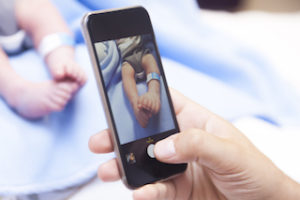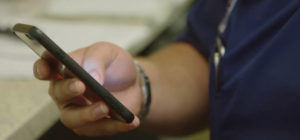It’s never been easier for clinicians to connect with each other—but at the same time, it’s never been more complicated, either.
That’s because as communication technologies get added to healthcare workflows, care team members are just a text, page, call, video chat away. But after a while, all those options may seem to cause as many problems than they solve. Does that mean clinicians have too many communication choices?
Not quite. The issue isn’t so much with the number of clinical touchpoints, since having messages split between texts, emails, video chats and VoIP calls serves the very important purpose of triaging notifications. But when the lines blur between communication channels—and a chat becomes a call, or a call becomes a text, the mishmash of clinical collaboration gets to be problematic. (And with the risk of medical errors, downright dangerous.)
When that happens, don’t blame the tool. Blame poor clinical communications etiquette. Luckily, these tips can help all platform users determine when to use one method over another so that everyone can make the most of a solution like MH-CURE:
When to Send a Text Message
When it comes to clinical mobility, texting should be reserved for middle-ground communications—the messages that aren’t high enough priority to warrant an urgent alert, but do deserve a real-time pop-up so that they don’t get buried in an email inbox. For example:
- Nudges and notes: Texts are good choices to send non-urgent reminders, like for medication changes or bed transfers.
- Requests and questions: Texting also makes sense if you have a non-urgent question or request, like needing a consult or asking for a medical asset.
- Updates: Clinicians also use texts for non-urgent status updates, such as to confirm a bed relocation or keep an attending updated on a patient’s progress.
When to Send a Video Chat
In an industry that continues to become more geographically spread out over multiple facilities, video chat steps up to help overcome barriers and foster better virtual care. But to preserve the utility of doctor-to-doctor video conferencing, all users must engage it only when appropriate. For example:
- E-consults: Video chatting is the perfect solution to conduct consults, especially in light of the fact that labor shortages—especially among specialists—can disproportionally affect some health systems (like those in rural areas). For some clinics, the nearest specialist may work miles away, which makes video chat all the more useful.
- Care transfers: When all clinicians can’t be present for a patient handoff, video chat can help make sure everyone still participates visually. This can help minimize confusion at every juncture of the transfer, and in doing so, potentially even reduce the risk of medical errors.
- Trainings and education: Video chat can also support a culture of learning with as few interruptions as possible. If a clinician has a question, for example, or needs assistance with a specific piece of equipment, video conferencing can help clear up any confusion that audio alone might cause.
When to Send a Broadcast
The broadcast option is a handy feature on the MH-CURE Platform that sends a blast message to a designated and customizable recipient list, which can be as small as just a few care team members or as large as the whole hospital. Along with MH-CURE’s urgent messaging option, broadcasts are ideal for urgent correspondence.
- High-priority alerts: Broadcasts are useful for emergency messages, like for a sepsis code, to ensure that multiple relevant providers see the message immediately.
- Department-wide correspondence: Messages intended for specified providers, such as all nurses, attendings, residents or fellows, are good options for the broadcast feature, because users can configure exactly who needs to see the correspondence (and who doesn’t).
- Lost and found: Nobody wants irrelevant messages about lost doodads, but broadcasts can be a great way to find misplaced medical assets. For example, a simple “Please return the infusion pump to Room 404” message, sent to all nurses on a given floor, can help save clinicians precious time that might otherwise be wasted searching for the asset room-to-room.
When to Just Call
Of course, for all the convenience of digital communications, some needs are best suited for a phone call, and a two-minute discussion might answer things that a 10-minute back-and-forth text exchange wouldn’t. However, phone calls can also be the most disruptive, depending on the circumstances—so before calling, ensure that it’s really something that can’t wait.
- Patient orders: For medication orders or other needs that require special attention to detail, leave it to a phone call to ensure the message gets relayed exactly as intended.
- ASAP communications: If a clinician needs to reach someone immediately, a phone call or page may just be the best way to do it in situations where a text is likely to get overlooked or forgotten.
- Complex messages: For needs that have a lot of complexity or that require back-and-forth discussion, save time and pick up the phone.
Cultivating a Culture of Good Etiquette (and Consolidation)
Above all, clinicians should think about the most important member of the care continuum—the patients—and how having good or bad etiquette will impact them. Will the correspondence advance care delivery in a positive, productive way? Or will it take clinicians away from the bedside unnecessarily?
These questions are important for any clinical team to think through. But to really optimize clinical communications, all facilities should work to cultivate (and codify) a culture of etiquette by crafting and enforcing best practices and protocols where it makes sense.
Start by considering your clinical workflows, and how communication channels can help solve problems or remove barriers unique to your needs. In your organization, which messages are ideal for texts or calls? How should clinicians send and respond to those communications? (For inspiration, check out the University of Virginia’s Health System example, here).
However, even if clinicians follow every best practice and protocol, there’s still the risk of all the beeps, buzzes and pings interrupting normal workflows. To keep notification fatigue to a minimum, choose a tool that consolidates all forms of communications—video chats, calls, texts and all—into a single, powerful platform, like that with MH-CURE.
By packing multiple communication channels into one lean-but-mighty application on a single device, our nimble solution gives doctors, nurses and other providers the benefit of choosing which types of messages to send to whomever they want, whenever they need. It’s all about making clinicians’ lives easier and patients’ lives better, and we’re confident that when deployed well, it can make a world of difference.





